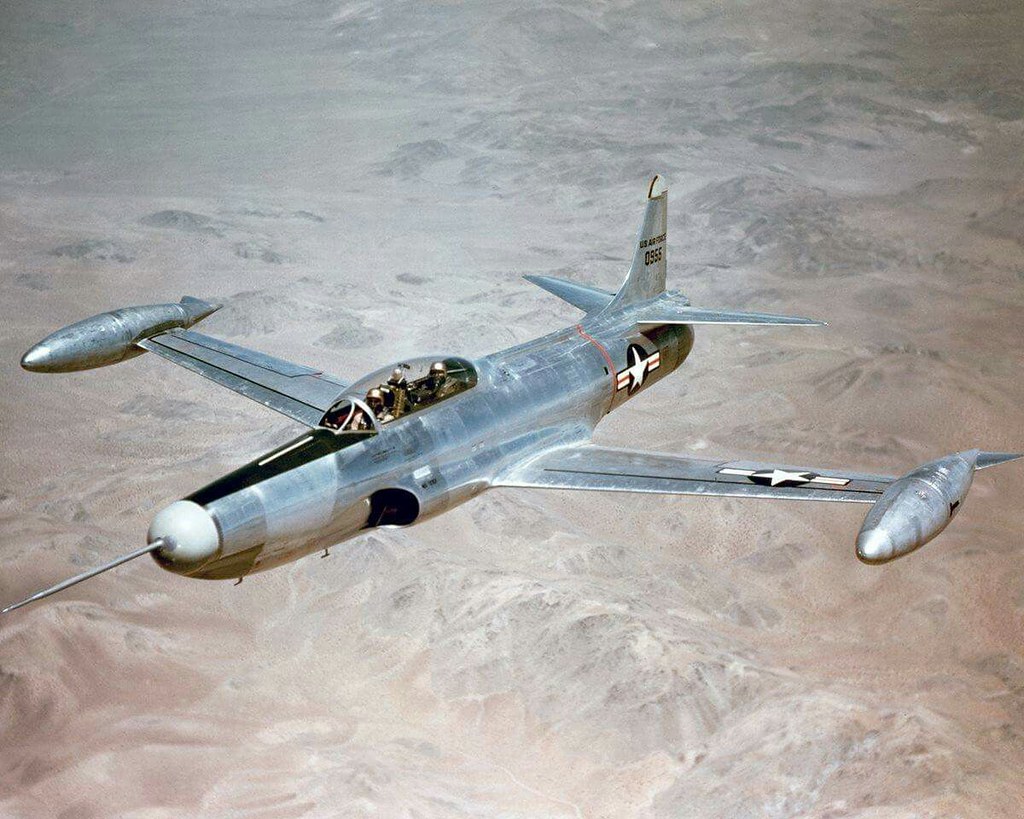
Описание: MSN 880-8000. Model 880. Modified from F-94B airframe on the production line. First flight Jan 19, 1950. Later redesignated YF-94C www.nationalmuseum.af.mil/ The F-94 series all-weather interceptors were developed from the Lockheed P-80 Shooting Star. The prototype F-94 first flew on July 1, 1949. The Starfire was subsequently produced in the A, B and C series. The F-94C (originally designated the F-97A) was a fundamental redesign of the F-94B and made its first flight on Jan. 18, 1950. Improvements in the F-94C included a higher thrust engine, single point refueling, a redesigned wing, a sweptback horizontal stabilizer, upgraded fire-control and navigation systems, and later, mid-wing rocket pods. Twenty-four rockets were carried in the nose in a ring around the radome, shielded by retractable doors, with an additional 24 in the wing pods, if installed. The F-94C carried no guns. Starfires were employed in the air defense of the continental United States in the 1950s. In the F-94A form, they served as the first all-jet, all-weather interceptor for the Air Defense Command. The last F-94Cs were withdrawn from USAF service in 1959. From Wikipedia (en.wikipedia.org/wiki/Lockheed_F-94_Starfire) The F-94C Starfire was extensively modified from the early F-94 variants. In fact, it was initially designated F-97, but it was ultimately decided to treat it as a new version of the F-94. USAF interest was lukewarm, so Lockheed funded development themselves, converting two F-94B airframes to YF-94C prototypes for evaluation. To improve performance, a completely new, much thinner wing was designed, along with a swept tail surface. The J33 engine was replaced with a more powerful Pratt & Whitney J48, a license-built version of the afterburning Rolls-Royce Tay, which dramatically increased power, producing a dry thrust of 6,350 pounds-force (28.2 kN) and approximately 8,750 lbf (38.9 kN) with afterburning.[3] The fire control system was upgraded to the new Hughes E-5 with an AN/APG-40 radar in a much larger nose. The guns were removed and replaced with all-rocket armament consisting of four groups of six rockets in a ring around the nose. The rockets were carried in four panels that could be hinged upwards and outwards for ground reloading. In flight these rockets were normally hidden aft of four fold-in doors that folded inwards for combat.
Tags:
Поиск и фотоизображения предоставлены компанией Flickr с помощью сервиса Flickr API согласно Правилам пользования сайтом Flick.com и его сервисами. Графические изображения являются публичными, размещёнными их авторами в свободный доступ (Public) и физически расположены на серверах Flickr. Все права на фотографии принадлежат их авторам согласно пользовательскому соглашению сервиса Flickr.com и охраняются законами, регулирующими авторские права.